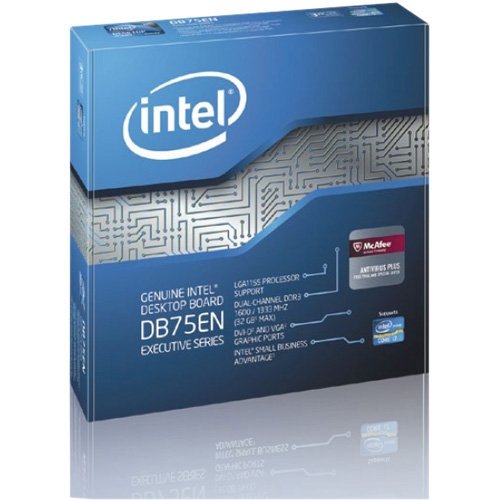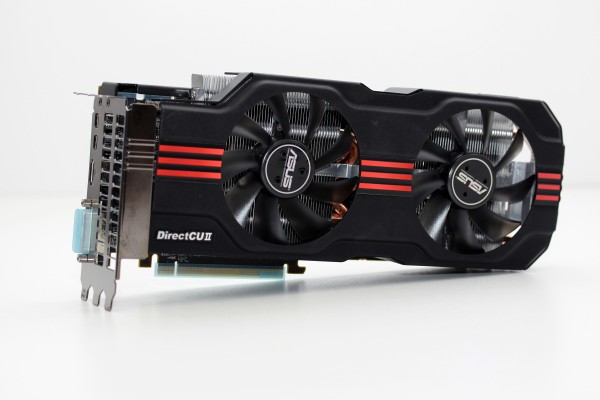Midrange System Buyer's Guide
by Zach Throckmorton on September 11, 2012 12:35 AM EST- Posted in
- Guides
- AMD
- Intel
- Ivy Bridge
- Radeon HD 7000
- NVIDIA
Developments in the Midrange Market
As with the budget segment of the DIY computer market, the midrange segment has seen many exciting new developments since the start of 2012. Perhaps the most noteworthy change is that Intel CPUs are now entirely dominant in systems that will set you back about $1,000. Ivy Bridge-based chips are now available at every price point from $100 up, leaving only the pure budget category untouched (at least until we see the Celeron IVB part). If you're interested in more information, we have a lot of information available on Ivy Bridge.
As with the latest CPUs, the newer B75 chipset has brought out of the box Ivy Bridge CPU support to less expensive motherboards, filling out the Panther Point platform. Ian thoroughly covered the Z77 chipset and compared it with H77. The B75 chipset is similar to Z77 and H77 with a few important differences for midrange buyers: two fewer USB 2.0 ports (eight vs. ten), one less SATA III port (one vs. two), and support for neither Intel RST (firmware RAID) nor SRT (SSD caching). PCIe 3.0 and 2.0 configurations are the same on B75 as they are on H77. The important point is that B75 enables less expensive motherboards that lack features that might not be important to midrange system builders, allowing money to spent on faster CPUs, GPUs, better SSDs, etc.

That said, AMD's impending launch of its Trinity APUs might very well put AMD back into the midrange market. AnandTech will be covering Trinity chips in more depth as the new APUs start hitting the mainstream desktop market over the next few months. While the parts are already shipping in OEM desktops, retail availability of the APUs has not yet occurred. For now, you can read more our current Trinity coverage.
As is often the case, the GPU market remains dynamic, with both AMD and NVIDIA wrestling for your money at multiple price points by introducing new cards and lowering prices on existing cards. We'll discuss the GPU market in more depth on the gaming rigs page.
Another development of note for midrange buyers is that prices on many of the best SSDs have been cut in half (or more!) compared to late 2011. This means that respectably-sized (i.e. 120/128GB and above) SSDs that perform very well and have great reputations for reliability are now comfortably within reach of even the lower end of the midrange budget. High capacity SSDs (i.e. those around 250GB) are also within midrange budgets; for many purposes, this means you can eschew a mechanical hard drive entirely—and either spend that money on better CPUs, GPUs, or just keep it in your wallet. Fortunately for consumers, prices on mechanical hard drives are declining in the wake of the Thailand floods, so the wallets of those with more demanding storage needs won't be hurting quite as badly as they were earlier in 2012.
Finally, case manufacturers have released many compelling choices for midrange system builders. Over the next few pages, we'll highlight new enclosures from Fractal Design, Corsair, Lian Li, NZXT, and others.
With that out of the way, let's get to the builds! We'll start with gaming machines on the next page.











95 Comments
View All Comments
just4U - Wednesday, September 12, 2012 - link
Nice post Jarred and overall I agree with it. Not sure on the math power draw wise.. but it does add up over time.rscoot - Thursday, September 13, 2012 - link
None of this disproves what I've said in any way though. They're slower CPUs at the price point being considered and they use more power to deliver that performance. That is why they aren't competitive.antef - Tuesday, September 11, 2012 - link
For the $1000 system is the GPU choice really that much of a toss-up? I'm having a hell of a time choosing between the 660 Ti and the 7950 myself. People in the forums seem to say the 7950 is faster but I'm not really seeing that from benches as this article suggests. However, the article also says the two are equal on power consumption and it seems that the 7950 actually consumes a fair bit more. Does the 7950 actually have better prospects over the next 2-3 years or can I go with the lower TDP of the 660 Ti?just4U - Tuesday, September 11, 2012 - link
It's hard to say... /w 3G of ram and room to play with performance via driver updates I'd say the 7950 is the better buy. But that's a personal opinion. I like the 660TI to but feel it should be sitting in the mid 200 range price wise. For me it was a toss up between the 670 (clearly supirior) or the 7950 which was cheaper. But since the the 7870 recently tanked in prices (I picked up a "HIS" 7870 GHZ ED. for $220 CAD) I just had to have it. Lower power consumption and heat then the 580 (which is no slouch!) and comparable performance. Love that.just4U - Tuesday, September 11, 2012 - link
As a side note. I've found that die-hard Nvidia fans (or ATi Fans) have a hard time going to the competitors GPU. They always look for faults and talk themselves into thinking it was a poor purchase. Other less biased see things as they are and jump back and forth all the time. Just depends on what suits their needs and price range.crazyboy1 - Wednesday, September 12, 2012 - link
seriously only 8GB of RAM? 16 GB RAM is not that expensive and would definitely help out in gaming! RAM is cheap these days getting 8GBX2 is not that much more expensive. if you wait for special deals on newegg, they get pretty cheap!Streetwind - Thursday, September 13, 2012 - link
How can 16 GB RAM help in gaming, when a single game is usually only able to address up to 2 GB by itself? That's the limit any 32bit software can grab for itself at the same time, regardless of how much the OS offers. And before games come as native 64bit applications, a few more years will go down the road. You probably won't see it until at least 90%-95% of all Windows users run on 64bit. Right now it's more like 50%.Playing a game works perfectly fine without RAM bottlenecks on 4 GB RAM. However, using 8 GB has additional advantages, such as caching more data which prevents slow HDD accesses, and allows multiboxing (many EVE players run several clients at once) or smooth video recording/streaming.
However, 16 GB? I don't see a use case, as far as gaming goes, right now.
You are correct, however, in stating that RAM is extremely affordable right now.
tigerslicer - Wednesday, September 12, 2012 - link
Its funny, I came up with nearly identical CPU cooler and PSU recommendations just prior to this post. I published to me blog about an hour before your article. Great minds think alike? :Phttp://www.owenjohnston.com/2012/09/for-maximum-va...
jbaker8935 - Friday, September 21, 2012 - link
i recently did a build with a coolermaster HAF 912 with and instant rebate & combo was less than the nzxt case . the coolermaster was much more enjoyable...it included an adapter for the samsung SSD. the nzxt does not... [mad now since my build is on hold until i can get one ]:
i thought the overall drive mounting scheme using the slide in clips was better on the cooler master.
_complexmath_ - Friday, October 19, 2012 - link
I picked up the ASRock Z77 Pro4-M board based on this buyer's guide and wasn't paying terribly close attention to the description on NewEgg when I got it. It turns out this is a Micro ATX board, and while it works just fine in a full ATX case, the board layout is pretty cramped. The HD Audio jack is directly underneath the only PCIE-3.0 slot on the board, for example, and putting a double width GPU in the PCIE-3.0 slot also covers the only PCIE-1.0 slot (the mini slot) on the board. Finally, a large aftermarket cooler overhangs one of the DIMM slots, so depending on the DIMMs purchased this slot may be unusable. In short, the board is great from a features perspective and I've managed to get everything plugged into it that I actually cared about using, but were I to do my build over I'd choose a full ATX board instead. I really don't think it's worth saving a few dollars to get this particular board when comparable full ATX boards are available.